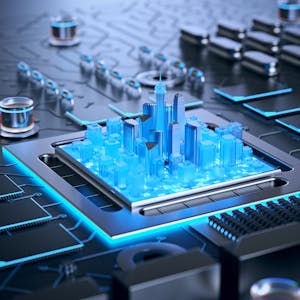Internet of Things Specialization
Internet of Things Specialization
Build Your Own Internet of Things. Learn the creation of the Internet of Things products and services in six courses.
This Specialization covers the development of the Internet of Things (IoT) products and services—including devices for sensing, actuation, processing, and communication—to help you develop skills and experiences you can employ in designing novel systems. The Specialization has theory and lab sections. In the lab sections, you will learn hands-on IoT concepts such as sensing, actuation, and communication. In the final Capstone Project, developed in partnership with Qualcomm, you’ll apply the skills you learned on a project of your choice using the DragonBoard 410c platform.
Harinath Garudadri
Associate Research Scientist
University of California San Diego
Bio:
Hari Garudadri recently moved from industry to academia to work on technologies that will (a) reduce the cost of healthcare delivery and (b) increase the reach of caregivers’ expertise to beyond hospital walls. Hari’s background is signal processing and he has practiced in diverse fields such as speech recognition, speech, audio
Courses
Bio:
Dr. Ganz Chockalingam is a Principal Engineer at the Qualcomm Institute, UC, San Diego. He obtained his

How Internet of Things – IoT & Cyber-Physical Systems Will Shape The 4th Industrial Revolution
IoT short for Internet of things & Cyber physical systems are going to shape the the future of technology and the 4th industrial revolution or industry 4.0
The quote from the “Economist” in 2017 “The world’s most valuable resource is no longer oil, but data” holds true today more than ever before.
Internet of Things is one of the pillars of the 4th industrial revolution. With the increase in adoption of different technologies such as Machine Learning, Augmented Reality, Cyber-Physical Systems and IoT, the world of digital transformation is about to take another leap in the next few years.
The technological advancements around the world are directly proportional to the growth of global automation which is driven by the Internet of Things and Cyber-physical Systems.
These systems will provide the foundation of our critical infrastructure, form the basis of emerging and future smart services, and improve our quality of life in many areas.
While the Internet of Things takes care of the connections between objects and machines to the internet, Cyber-physical systems are machines in which a mechanism is controlled or monitored by computer-based algorithms.
Other phrases that you might hear when discussing the Internet of Things and Cyber-physical systems are Smart Anything: Manufacturing, agriculture, Cities, Buildings, Homes, pills, etc




